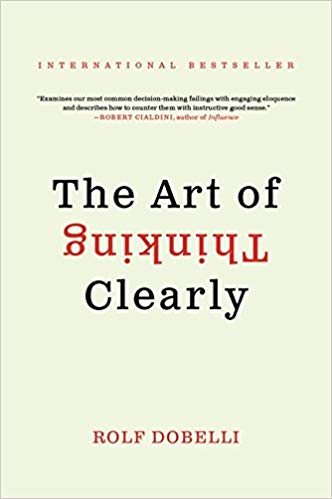 If we could learn to recognize and evade the biggest errors in thinking – in our private lives, at work, or in government – we might experience a leap in prosperity. We need no extra cunning, no new ideas, no unnecessary gadgets, no frantic hyperactivity – all we need is less irrationality.
If we could learn to recognize and evade the biggest errors in thinking – in our private lives, at work, or in government – we might experience a leap in prosperity. We need no extra cunning, no new ideas, no unnecessary gadgets, no frantic hyperactivity – all we need is less irrationality.
The Art of Thinking Clearly
by Rolf Dobelli
We are all guilty of cognitive biases, simple errors we make in day-to-day thinking. But by knowing what they are and how to identify them, we can avoid them and make better choices. The Art of Thinking Clearly shows that in order to lead happier, more prosperous lives, we don’t need extra cunning, new ideas, shiny gadgets, or more frantic activity—all we need is less irrationality. Simple, clear, and always surprising, this book will change the way you think and transform your decision making. From why you should not accept movie you don’t like, from why it’s so hard to predict the future to why you shouldn’t watch the news, The Art of Thinking Clearly helps solve the puzzle of human reasoning.
Contents